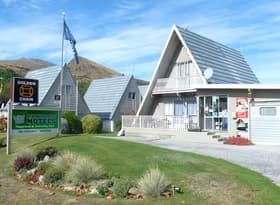How much of a rip-off is public transport?
If you’ve ever sat on a train inexplicably stopped 500m from Wellington Railway Station, you’ve probably pondered the merits of public transport. Why not drive instead? And how much extra would you be willing to pay if the public transport was reliable?
Greater Wellington Regional Council’s decision to increase train fares by an average of 5% from September has been panned by passengers it means that train fares will have increased by about 40% since 2005. A common response is that the repeated fare hikes might be justifiable if the service had improved 40% over the last six years. But that sort of improvement doesn’t line up with the experience of passengers, and recent Treasury papers suggest there is another eight years of upgrade work before Wellington’s rail network will be reliable.
Part of Greater Wellington’s reasoning for increasing fares is that government policy dictates that public transport passengers should meet 50% of the cost of the services. Figures published last year by the NZ Transport Agency show the nationwide "firebox recovery ratio" is about 46%. In other words, the true cost of your $3.70 train ride from Petone Wellington is probably closer to $8. The remainder of the fare is subsidised equally through property rates and central government funding.
The council’s subsidy in the Wellington region last year amounted to about $85 per person, or almost $225 per household. Public transport is subsidised for two main reasons: to provide cost-effective transport options for people who have limited access to a car; and to reduce road congestion, particularly at peak times. It is virtually impossible to tell what proportion of the subsidy implicitly goes towards each of these two aims. However, the cost of transporting each passenger at peak time is probably much lower than the cost of providing off-peak services because the buses and trains are much fuller at peak time. So the implied subsidy for peak-time travel is probably much smaller than for off-peak journeys, with peak-time commuters effectively topping up the running costs for services at off-peak times.
Given that Wellington has the most well-patronised public transport services in the country, it is surprising that ratepayer subsidies are also the highest in the country. The fare revenue generated by the 25% of the region’s workforce that commute using public transport should make peak services highly profitable and help defray the costs of off-peak services. Yet the average Wellington ratepayer pays 67% more in subsidies than their Auckland counterparts and almost five times the amount faced by Waikato ratepayers.
In my view, $1 per household per workdays a small price to pay to reduce the number of cars on Wellington’s roads at peak time by 20%. At first glance, $1 per day also seems reasonable to provide a socially responsible public transport system. But I’m less convinced that Wellington ratepayers should pay considerably more than people in any other town or city given that the Wellington system should be one of the most economically viable in the country.
Why are Wellington ratepayers being charged much more than anyone else? Is the 50% fare box recovery ratio appropriate across all regions or should it be lower in regions where public transport is used less? Is Wellington’s off-peak public transport gold-plated and providing more "social assistance" than necessary? Is the combination of both rail and bus services cost-effective given the population size? Does a lack of competition in service provision mean that ratepayers are being ripped off?
The model for public transport provision is difficult. Rail services are at the mercy of a single provider. Wellington’s bus services are monopolised by two companies, with little competition in tendering for service provision. There are very few incentives for adequate service provision and the council has limited power to introduce them; even if incentives were in place, repeated penalties would risk forcing one of the few transport companies out of business, thereby causing considerable disruption. And the transport companies providing the services have little input into the coverage or frequency of services those factors are determined by the council, where there is perhaps less incentive to get the mix of services right.
NZTA’s fare box recovery ratio target of 50% is reportedly unpopular, but given the level of public transport usage at peak times in Wellington, I’d suggest that it should probably be higher. That doesn’t necessarily mean fares need to rise, but it may mean that off-peak services need closer scrutiny with a view to cutting back on ones that are losing money. Questions also need to be asked about whether the current market-driven model is the most appropriate for providing public transport. Service levels may be better than they were before deregulation in 1989, but is public transport really better value for money as a result of private sector provision?









